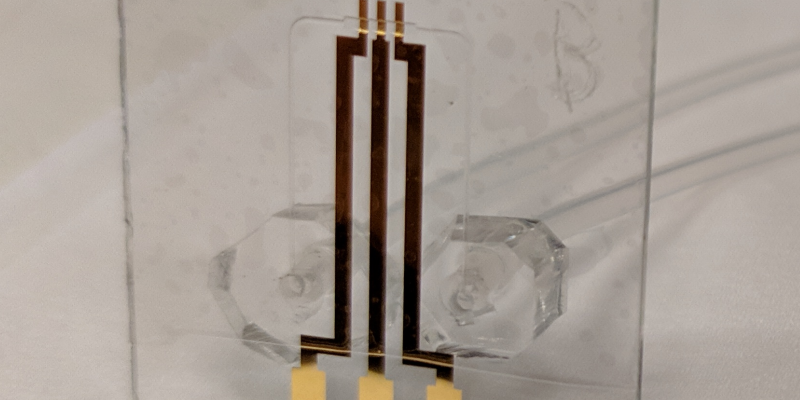Communications Office, April 11th, 2022
Paper presents microfabrication and characterization of a multifunctional device suitable for the combination of X-ray analytical techniques
Sirius, the synchrotron light source of the Brazilian Center for Research in Energy and Materials, organization under the supervision of the Brazilian Ministry of Science, Technology and Innovation (MCTI), is one of the most advanced in the world. Its experimental stations, called beamlines, are designed to house advanced instrumentation capable of taking full advantage of the synchrotron light produced by state-of-the-art electron accelerators. Hence, the CNPEM teams are also dedicated to the development of new sample environments that allow the investigation at the molecular and atomic scale of different types of organic and inorganic materials to solve major scientific and technological challenges.
In a work published in Scientific Reports [1], the first scientific article produced with data from the Carnaúba beamline, the beamline team, in collaboration with the Brazilian Nanotechnology National Laboratory (LNNano), presented the microfabrication and characterization of a three-electrode device microfluidic based on a new sealing method, compatible with X-rays in reflection mode, infrared and visible light.
Microfluidic devices operate with small amounts of samples through micrometer and/or submicrometer channels. These devices have a reduced size, low weight and high performance, and are ideal for use in nanoprobes, such as the Carnaúba beamline. Applications of these devices in synchrotron light sources include protein crystallography, advanced materials, electrochemistry, catalysis, as well as in vivo experiments. These devices greatly contribute to the investigation of these complex systems, providing information on electronic, structural and chemical properties in real time, in situ and/or operando conditions.
The device is designed with only two main parts; a glass substrate and a thin polymer used as a sealing layer, and microfabrication involves well-established and scalable techniques. The device consists of glass microchannels, where three gold (Au) electrodes are deposited and sealed by a polyester film.
The microfluidic device was characterized with synchrotron light in the Carnaúba beamline through 2D X-ray fluorescence mapping, both of its basic components, such as the Au electrode and the chromium (Cr) adhesion film, as well as through the result of an electrochemical reaction involving silver (Ag) and chlorine (Cl) with the nucleation of AgCl nanoparticles at the Au electrode. The characterization revealed a versatile device with remarkable chemical resistance, which can operate as an electrochemical cell at ambient pressure and withstand high pressures. The device is very effective in reflection mode, showing high transparency in X-ray fluorescence experiments, being suitable for in situ electrochemistry. The device also provides the conditions for other X-ray techniques, making it possible to explore, in addition to ex situ experiments, advanced multi-techniques available in synchrotron beamlines.
This work, which also generated a patent filing, was developed in part during the 2020 edition of the CNPEM Summer Scholarship Program by author Lucas F. Castro.

Nanofluorescence experiments on the microfluidic device. (a) 3D schematic of the microfluidic sample holder. (b) Fluorescence spectrum collected at the central electrode. (c-d) Optical micrograph of the channel and electrodes highlighting the ROI (magenta rectangle) scanned by a nanobeam of about 600 nm x 600 nm. (e-f) Au-La fluorescence maps (9713 eV) over circle 1 and 2 at the edge of the electrode. (g-h) Au (La) and Cr-Ka (5.4 keV) maps obtained in circle 3. The experiments were carried out in the channels filled with water. Nano-XRF maps have a pixel size of 5 µm and a total acquisition time of 65 seconds, with 22.5 ms per pixel or step.
Source: [1] Neckel, I.T., de Castro, L.F., Callefo, F. et al. Development of a sticker sealed microfluidic device for in situ analytical measurements using synchrotron radiation. Sci Rep 11, 23671 (2021). DOI: 10.1038/s41598-021-02928-2


